Subscribe to our ▶️ YouTube channel 🔴 for the latest videos, updates, and tips.
Quarter Past and Quarter To
The hands of clock move from left to right. This is called the clock wise motion. When the minute hand is on the right side of the clock, it shows the number of minutes past the hour. When the minute hand is on the left side of the clock, it shows the number of minutes to the next hour.
If we divide a clock into 4 equal parts then each part is one quarter.
When minute hand is at 3, it shows 3 × 5 = 15 minutes, which is one quarter of an hour. The time is said to be quarter past hour. When the minute hand is at 9, it is 9 × 5 = 45 minutes. The time is said to be quarter to the next hour.
15 minutes past 8
or, Quarter past 8
15 minutes past 12
or, Quarter past 8
45 minutes past 1
or, Quarter to 2
45 minutes past 3
or, Quarter to 4
Quarter past:
|
Look at this clock |
Hour hand is ahead of 9. The minute hand is at 3. The time is 9: 15. It is read as 'quarter past nine' |
Quarter to:
In the given figure below, the hour hand is between 2 and 3.
The minute hand is at 3.
The time is
15 minutes past 2
or
two fifteen
or
a quarter past 2.
In the given figure, the hour hand is between 3 and 4.
The minute hand is at 9.
The time is
45 minutes past 3
or
three forty-five
or
a quarter to 4.
We know that 1 hour = 60 minutes
So, quarter of an hour = quarter of 60 minutes = 15 minutes
In 'quarter past', the minute hand completes one-fourth of a round on the clock face. This is equal to 15 minutes.
For example, in the clock below, the minute hand is at 3 and the hour hand is between 3 and 4, but nearer to 3. This means 15 minutes have passed after 3 o'clock.
So, the time is 3:15 or 'quarter past 3'.
In 'quarter to', the minute hand is yet to finish one-fourth of a round on the clock face. It has completed three-fourths of the round. This is equal to 45 minutes.
For example, in the clock below, the minute hand is at 9 and the hour hand is between 3 and 4, but nearer to 4. This means 15 minutes are left to 4 o' clock.
So, the time is 3:45 or 'quarter to 4'.
Worksheet on Quarter Past and Quarter To:
I. Read and write the time shown on the given clocks in two ways.
Answer:
I. (i) 5:45, Quarter to 6
(ii) 6:15, Quarter past 6
(iii) 12:45, Quarter to 1
(iv) 10:45, Quarter to 11
(v) 11:45, Quarter past 11
(vi) 2:45, Quarter to 3
II. Match the clock with their respective time.
Answer:
II: (i) → 3 → B
(ii) → 1 → D
(iii) → 4 → A
(iv) → 2 → C
From Quarter Past and Quarter To to HOME PAGE
Didn't find what you were looking for? Or want to know more information about Math Only Math. Use this Google Search to find what you need.
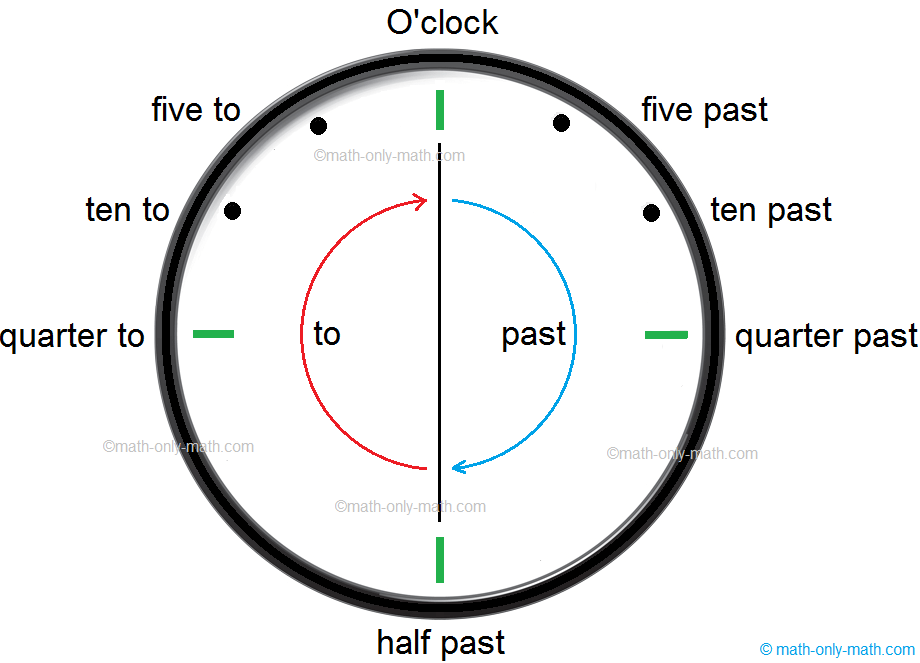

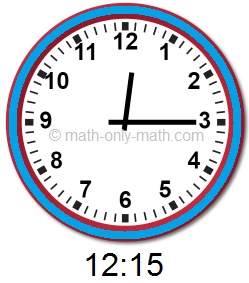
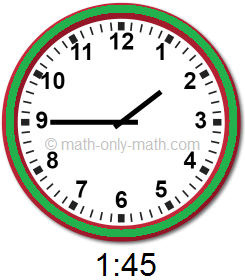
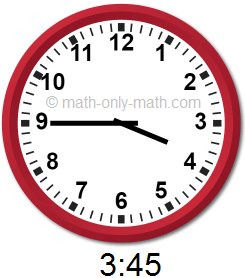
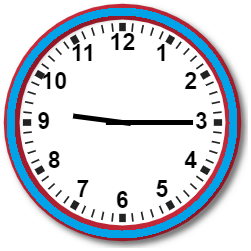
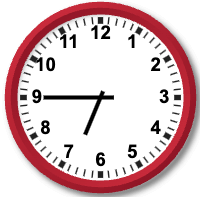
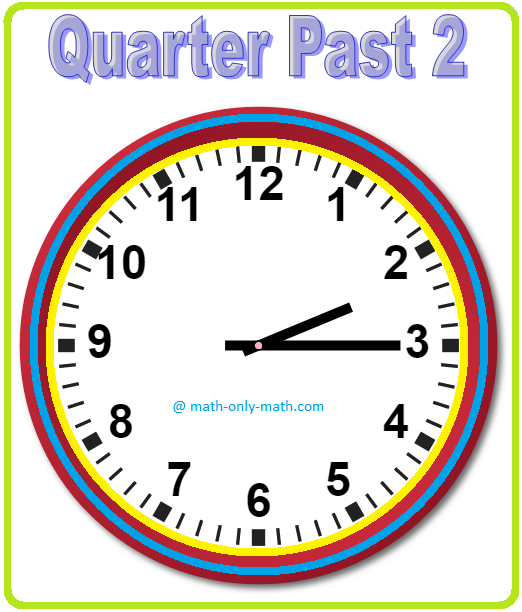
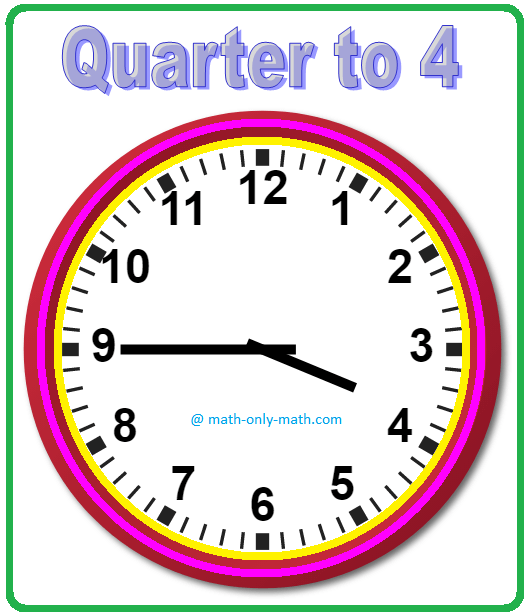
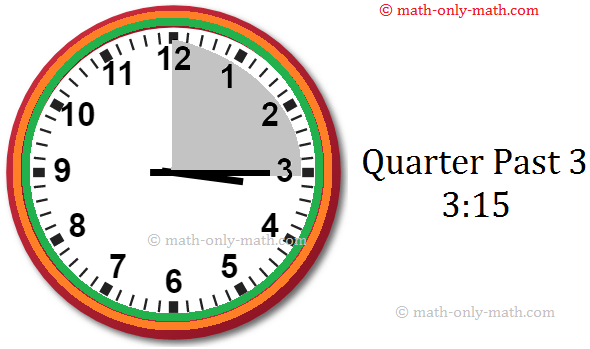
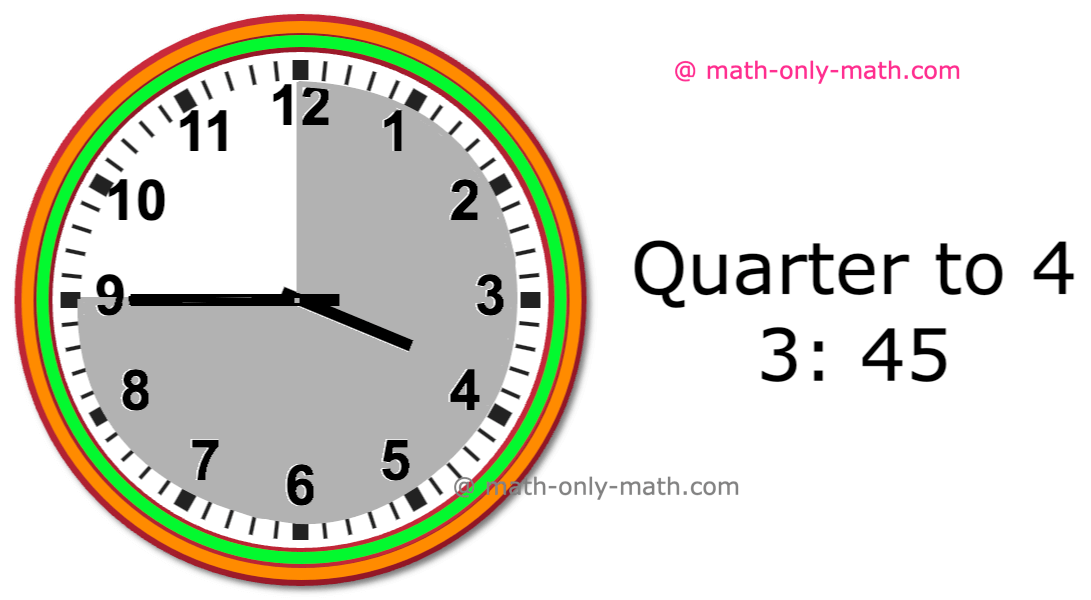


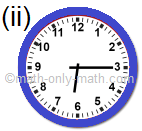
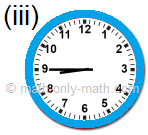
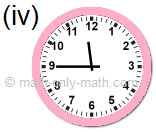


New! Comments
Have your say about what you just read! Leave me a comment in the box below. Ask a Question or Answer a Question.